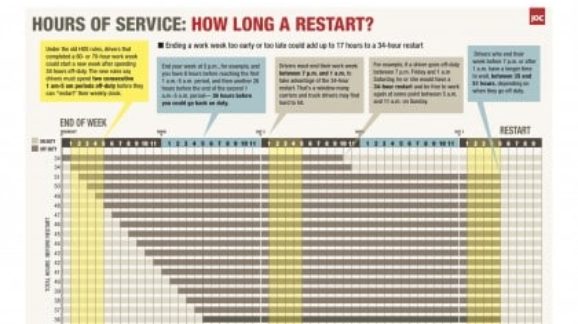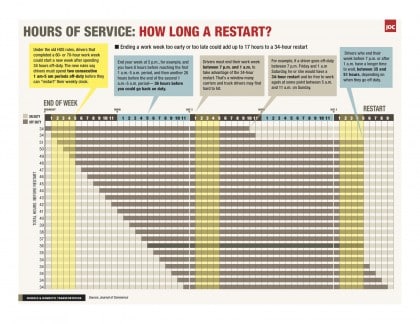USDOT Wants it Both Ways with Off-Peak Freight Movements

Over at the U.S. Department of Transportation’s Fastlane blog, Greg Nadeau, administrator of the Federal Highway Administration, has a post touting USDOT’s support for off-peak freight delivery pilot projects underway in New York City and Pensacola, Florida.
The problem of local traffic is well-known to any major U.S. city; truck operators suffer when forced to crawl through crowded city streets, and residents suffer when trucks block travel lanes or parking access. With commuter traffic lighter and parking more available, off-peak hours should make delivery easier for truck drivers as well as peak commuters and people scrambling for parking.
[…]
Funding in both pilots will be used to help businesses retool their operations to accommodate shipments during off hours and help distributors reconfigure routes and supply chains through low-cost, operational strategies.
Now this is all well and good, and Administrator Nadeau deserves credit for promoting a smart strategy to ease congestion and improve freight flows. However, it is a bit ironic for USDOT to be touting the very real benefits of off-peak freight movements while they are simultaneously working to push more freight movements into the morning peak hours.
Back in 2011, USDOT’s Federal Motor Carrier Safety Administration (FMCSA) revised the hours-of-service (HOS) rules that must be followed by truckers and bus drivers, aiming to reduce crashes associated with fatigue. CEI criticized the proposal in formal comments to the agency, arguing that the HOS rules would not improve safety and that the agency was abusing scholarly research to support its bogus findings.
One particularly egregious problem with the HOS rules involves off-peak scheduling. Under federal regulations, truckers may work up to 60 hours over seven days or 70 hours over eight days (commonly referred to as the weekly limit), in addition to a 14-hour daily work limit and 11-hour daily driving limit. Drivers are permitted to “restart” the weekly limit by taking 34 hours off duty.
Under rules that came into force in 2013, drivers would be required to include two consecutive 1am to 5am periods in that 34-hour restart and would only be able to restart once per week. Confused yet? Take a look at this handy chart from the Journal of Commerce:
As noted in the JOC article, for drivers to attain a restart that satisfies the minimum 34 hours and only that, a driver would have to end his workweek within a 6-hour window between 7 p.m. and 1 a.m. Aiding in the math is a chart that allows drivers to select what time they would go off duty at the end of their week. The chart then shows when a driver would be allowed to resume work and begin his or her next 70-hour week.
For instance, if a driver ended his or her workweek at 3 p.m., he or she would not be able to resume work until 5 a.m. two days later, resulting in a 38-hour restart.
If a driver ended his work week at 2 a.m., however, he also wouldn’t be able to resume work until 5 a.m., resulting in a 51-hour restart period.
As you might imagine, this could be very disruptive to both supply chains and drivers’ incomes. Further, the lengthy and unnecessary restart periods incentivize the cash-strapped drivers to get back to work as quickly as is permissible under the regulations, meaning that they’ll try to be on the road shortly after 5am. And what happens on most days beginning shortly after 5am? The morning rush hour. This can potentially reduce safety, as the volume of cars is very high and car drivers are responsible for the large majority of multi-vehicle crashes involving trucks.
Fortunately, Congress in December 2014 forbade FMCSA from enforcing the rules (implemented at 49 C.F.R. §§ 395.3(c)-(d)) under Section 113(a) of the Consolidated and Further Continuing Appropriations Act of 2015. But we should not forget that if USDOT had its way—and if Congress hadn’t applied the brakes—more truck traffic would be shifted from off-peak hours to peak hours. Keep this in mind as USDOT continues touting its off-peak freight delivery pilot programs.
